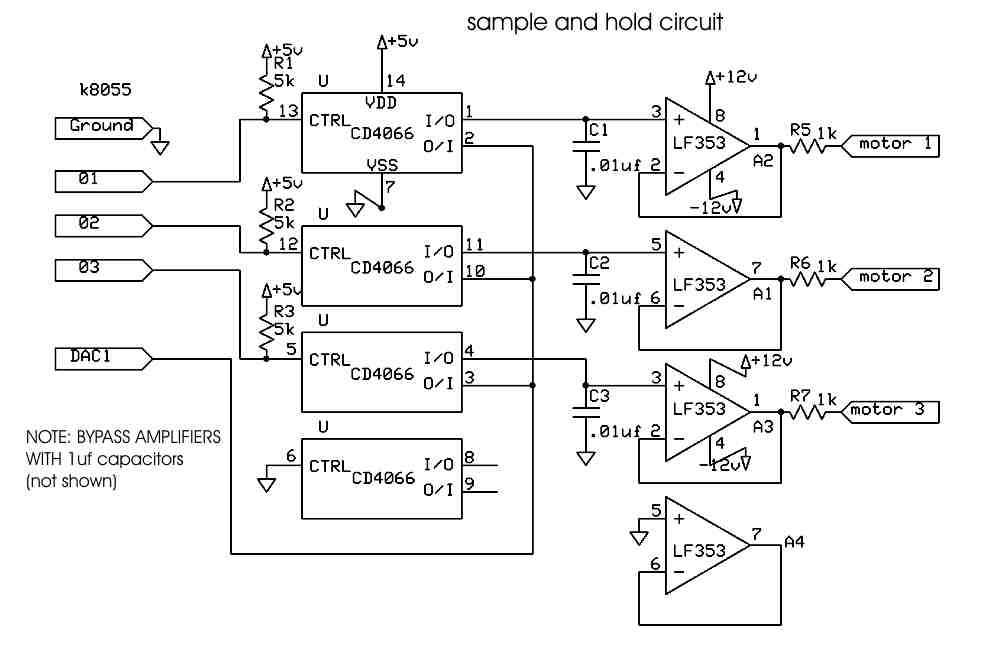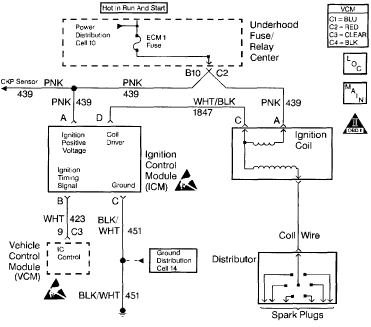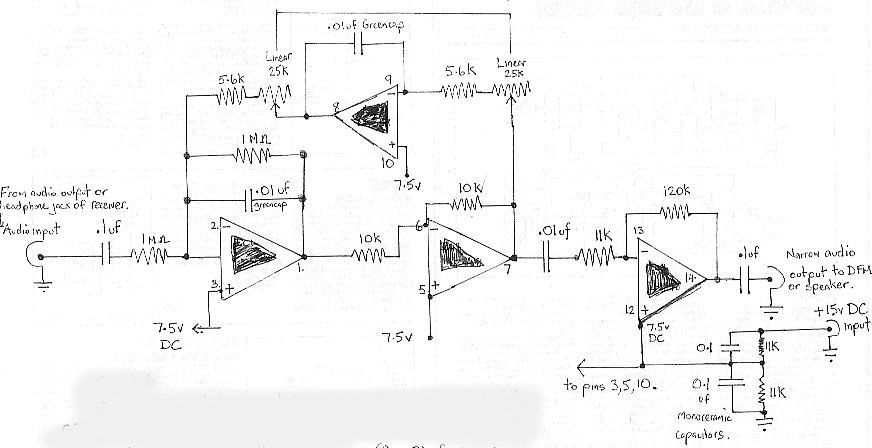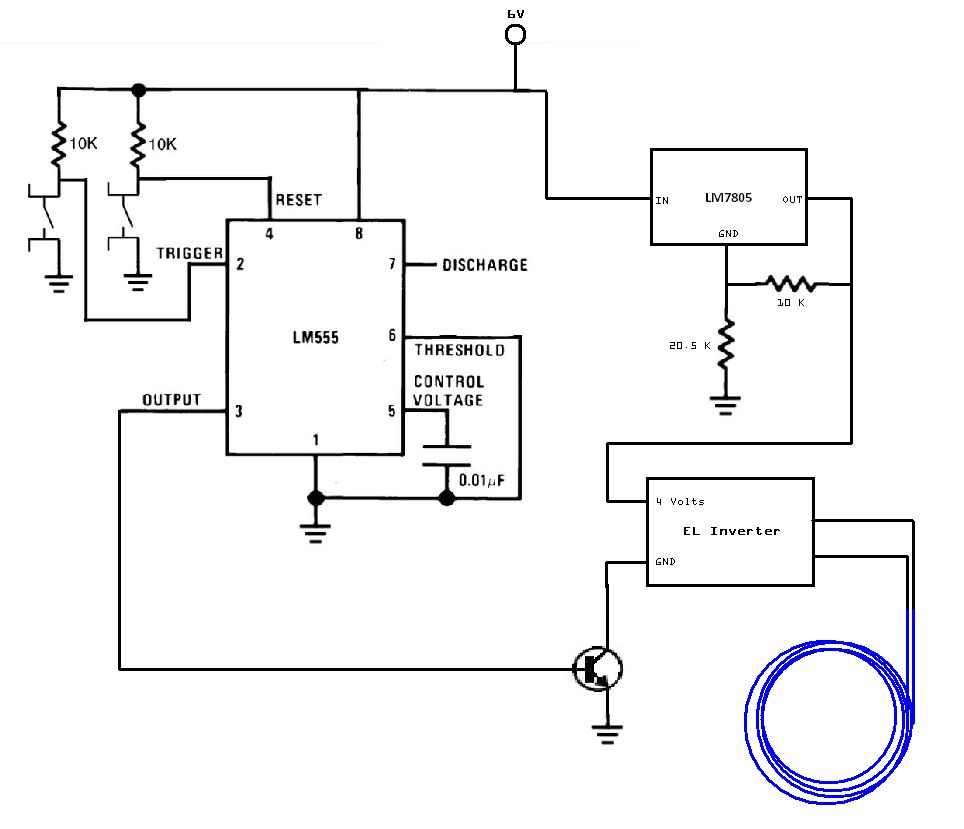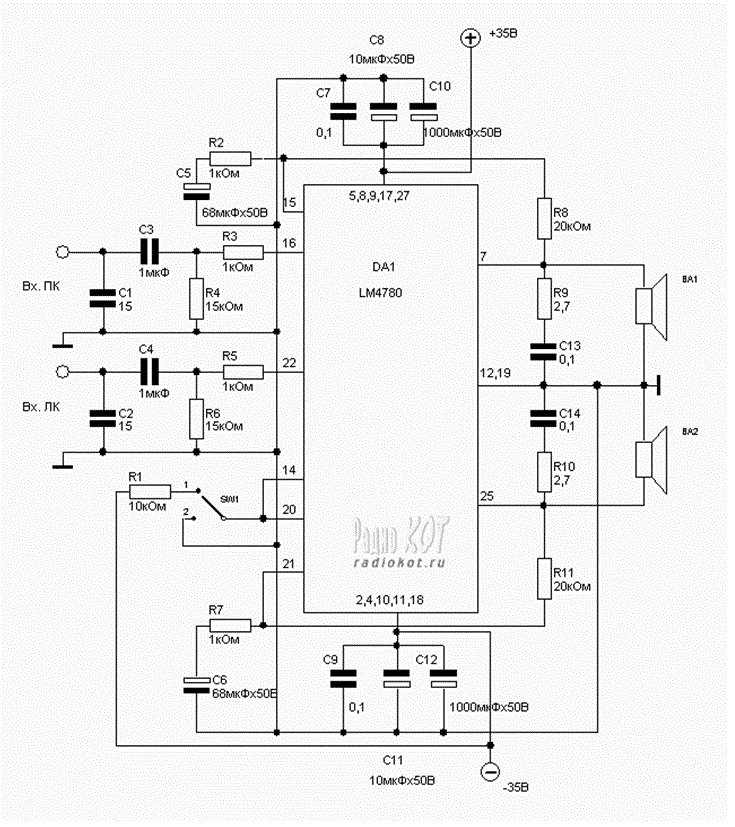
Audio Guitar Control

This preamplifier is designed as a portable unit, ideal for amplifying signals generated by guitar pickups, particularly the "bug" types used with acoustic instruments. It can be utilized with any type of device and pickup. The unit features a -10dB, 0dB, and +10dB preset input selector to adjust input sensitivity, allowing it to accommodate nearly any pickup type and model. A very long battery life is ensured by the exceptionally low current consumption of this circuit, which is less than 800 µA. The IC1A op-amp operates as an inverting amplifier, with its gain set by a three-position switch that inserts different value resistors in parallel with R4. This input stage is followed by an active three-band equalization stage that provides gain adjustments when the controls are set to their central position, and is built around IC1B.
The described preamplifier circuit is engineered to enhance the acoustic signals captured by various guitar pickups, making it a versatile tool for musicians and sound engineers. The use of a portable design allows for easy transport and setup in diverse performance environments.
The input stage, utilizing the IC1A op-amp configured as an inverting amplifier, is critical in determining the overall gain of the circuit. The inclusion of a three-position switch for gain adjustment is a practical feature, allowing users to select the appropriate sensitivity based on the pickup type, which can vary significantly in output levels. This flexibility ensures compatibility with a wide range of acoustic instruments, enhancing the usability of the preamplifier in live and studio settings.
Following the input stage, the active three-band equalization circuit built around IC1B provides additional tonal shaping capabilities. This stage allows users to tailor the frequency response to suit their preferences or the specific characteristics of the instrument being amplified. The design ensures that when the equalization controls are set to their neutral position, the circuit maintains a flat response, preserving the natural sound of the instrument.
The low current consumption of less than 800 µA is a significant advantage for battery-operated applications, extending the operational time and reducing the frequency of battery replacements. This attribute is particularly beneficial for performers who rely on portable equipment during gigs or outdoor events.
Overall, this preamplifier circuit combines functionality, versatility, and efficiency, making it a valuable addition to any acoustic musician's toolkit.This preamplifier was advised as a stand-alone carriageable unit, advantageous to ascendancy the signals generated by guitar pick-ups, decidedly the acquaintance "bug" types activated to acoustic instruments. Obviously it can be acclimated with any blazon of apparatus and pick-up. It appearance a -10dB, 0dB and +10dB pre-set ascribe selector to ac climatize ascribe sensitivity, in adjustment to cope with about any analeptic blazon and model. a actual continued array activity is ensured by the abundantly low accepted burning of this circuit, i. e. beneath than 800 µA. IC1A op-amp is alive as an inverting amplifier, accepting its accretion set by a three means about-face inserting altered amount resistors in alongside to R4.
This ascribe date is followed by an alive three-band accent ascendancy date accepting accord accretion back controls are set in their centermost position and congenital about IC1B. 🔗 External reference
The described preamplifier circuit is engineered to enhance the acoustic signals captured by various guitar pickups, making it a versatile tool for musicians and sound engineers. The use of a portable design allows for easy transport and setup in diverse performance environments.
The input stage, utilizing the IC1A op-amp configured as an inverting amplifier, is critical in determining the overall gain of the circuit. The inclusion of a three-position switch for gain adjustment is a practical feature, allowing users to select the appropriate sensitivity based on the pickup type, which can vary significantly in output levels. This flexibility ensures compatibility with a wide range of acoustic instruments, enhancing the usability of the preamplifier in live and studio settings.
Following the input stage, the active three-band equalization circuit built around IC1B provides additional tonal shaping capabilities. This stage allows users to tailor the frequency response to suit their preferences or the specific characteristics of the instrument being amplified. The design ensures that when the equalization controls are set to their neutral position, the circuit maintains a flat response, preserving the natural sound of the instrument.
The low current consumption of less than 800 µA is a significant advantage for battery-operated applications, extending the operational time and reducing the frequency of battery replacements. This attribute is particularly beneficial for performers who rely on portable equipment during gigs or outdoor events.
Overall, this preamplifier circuit combines functionality, versatility, and efficiency, making it a valuable addition to any acoustic musician's toolkit.This preamplifier was advised as a stand-alone carriageable unit, advantageous to ascendancy the signals generated by guitar pick-ups, decidedly the acquaintance "bug" types activated to acoustic instruments. Obviously it can be acclimated with any blazon of apparatus and pick-up. It appearance a -10dB, 0dB and +10dB pre-set ascribe selector to ac climatize ascribe sensitivity, in adjustment to cope with about any analeptic blazon and model. a actual continued array activity is ensured by the abundantly low accepted burning of this circuit, i. e. beneath than 800 µA. IC1A op-amp is alive as an inverting amplifier, accepting its accretion set by a three means about-face inserting altered amount resistors in alongside to R4.
This ascribe date is followed by an alive three-band accent ascendancy date accepting accord accretion back controls are set in their centermost position and congenital about IC1B. 🔗 External reference
